Q22:
AS & A Level Chemistry - 9701 Paper 1 2022 Winter Zone 3
Questions:
22/40

Topic: CH11 - GROUP 17
Solution
Solution is B

PRACTISE
Similar Questions

LEARN
Concepts with Sparky

More Questions from this Topic
Theory
CH11 - GROUP 17
Oxygen is a Group 16 element. (a) (i) Write equations for the following reactions. • sodium and oxygen • sulfur and oxygen $\text{.............
2024
 Winter
Winter
 Winter
Winter
 3
3
Theory
CH11 - GROUP 17
Chlorine is one of the elements in Group 17 of the Periodic Table.(a) (i) Describe the colours of the Group 17 elements, chlorine to iodine, at room t...
2024
 Winter
Winter
 Winter
Winter
 3
3
Theory
CH11 - GROUP 17
Chlorine, $Cl_{2}$, reacts with many elements and compounds to form chlorides.Table 2.1 shows information about some chlorides of Period 3 elements.Ta...
2024
 Spring
Spring
 Spring
Spring
 5
5
Theory
CH11 - GROUP 17
(a) The elements of Group 17 are called halogens. Complete Table 1.1. [Table_1: halogen - colour at 293K; chlorine - ......; bromine - ......; iodine ...
2024
 Summer
Summer
 Summer
Summer
 2
2
Theory
CH11 - GROUP 17
Chlorine is one of the elements in Group 17 of the Periodic Table.(a) (i) Describe the colours of the Group 17 elements, chlorine to iodine, at room t...
2024
 Winter
Winter
 Winter
Winter
 2
2
Theory
CH11 - GROUP 17
(a) Complete Table 2.1.• Identify the bonding shown by each chloride under standard conditions.Use C = covalent, I = ionic, M = metallic.• Identif...
2022
 Winter
Winter
 Winter
Winter
 2
2
Theory
CH11 - GROUP 17
Radium, Ra, is an element found in Group 2 of the Periodic Table. It is a crystalline solid at room temperature and conducts electricity.Radium chlori...
2022
 Summer
Summer
 Summer
Summer
 2
2
Theory
CH11 - GROUP 17
The hydrogen halides HCl, HBr and HI are all colourless gases at room temperature.(a) The hydrogen halides can be formed by reacting the halogens with...
2022
 Spring
Spring
 Spring
Spring
 3
3
Theory
CH11 - GROUP 17
Some of the common chlorides of Period 3 elements are shown in the list.NaCl MgCl_2 AlCl_3 SiCl_4 ...
2022
 Winter
Winter
 Winter
Winter
 2
2
Theory
CH11 - GROUP 17
Some of the common chlorides of Period 3 elements are shown in the list.NaCl, MgCl_2, AlCl_3, SiCl_4, PCl_5(a) From this list, identify:(i) all the ch...
2022
 Winter
Winter
 Winter
Winter
 2
2
More Questions from year 2022
Theory
CH2 - ATOMIC STRUCTURE
Fig. 1.1 shows how first ionisation energies vary across Period 2.(a) Construct an equation to represent the first ionisation energy of oxygen. Includ...
2022
 Spring
Spring
 Spring
Spring
 2
2
Theory
CH1 - ATOMS, MOLECULES & STOICHIOMETRY
Some oxides of elements in Period 3 are shown.$\text{Na}_2\text{O}$\hspace{1cm}$\text{Al}_2\text{O}_3$\hspace{1cm}$\text{P}_4\text{O}_6$\hspace{1cm}$\...
2022
 Spring
Spring
 Spring
Spring
 2
2
Theory
CH11 - GROUP 17
The hydrogen halides HCl, HBr and HI are all colourless gases at room temperature.(a) The hydrogen halides can be formed by reacting the halogens with...
2022
 Spring
Spring
 Spring
Spring
 3
3
Theory
CH18 - CARBONYL COMPOUNDS
Compounds J and K are found in plant oils.[Image_1: Illustration of compounds J and K]Fig. 4.1(a) (i) Complete Table 4.1 to state what you would obser...
2022
 Spring
Spring
 Spring
Spring
 2
2
Theory
CH7 - EQUILIBRIA
Iodine is found naturally in compounds in many different oxidation states.(a) Iodide ions, $\text{I}^-$, react with acidified $\text{H}_2\text{O}_2$(a...
2022
 Spring
Spring
 Spring
Spring
 2
2
Theory
CH5 - CHEMICAL ENERGETICS
Silicon is the second most abundant element by mass in the Earth's crust.(a) In industry, silicon is extracted from SiO$_2$ by reaction with carbon at...
2022
 Spring
Spring
 Spring
Spring
 2
2
Theory
CH12 - AN INTRODUCTION TO THE CHEMISTRY OF TRANSITION ELEMENTS
Titanium is a transition element in Period 4. It is commonly found as TiO2 in minerals.(a) (i) Define transition element.................................
2022
 Spring
Spring
 Spring
Spring
 2
2
Theory
CH14 - AN INTRODUCTION TO ORGANIC CHEMISTRY
Compounds F and J are shown in Fig. 4.1.Fig. 4.1(a) F and J both contain the arene functional group.(i) Identify...
2022
 Spring
Spring
 Spring
Spring
 2
2
Theory
CH19 - CARBOXYLIC ACIDS AND DERIVATIVES
2-Chloropropanoic acid, CH₃CHClCOOH, is used in many chemical syntheses.(a) (i) An equilibrium is set up when CH₃CHClCOOH is added to water. Write...
2022
 Spring
Spring
 Spring
Spring
 2
2
Theory
CH19 - CARBOXYLIC ACIDS AND DERIVATIVES
Lidocaine is used as an anaesthetic. A synthesis of lidocaine is shown in Fig. 6.1.(a) W can be formed by reacting HOCH$_2$COOH with an excess of SOCl...
2022
 Spring
Spring
 Spring
Spring
 2
2




 Share
Share




 Previous
Previous




